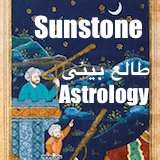The New Yorker:
Two New York productions of Strauss’s opera reposition its necrophiliac protagonist as a perverse instrument of justice.
By Alex Ross
The Biblical figure of Salome, Princess of Judea, who dances before Herod Antipas and demands the head of John the Baptist as a reward, infiltrated late-nineteenth-century culture as an agent of extreme decadence—“the goddess of immortal Hysteria,” as the novelist Joris-Karl Huysmans called her. In Oscar Wilde’s play “Salomé,” written in French in 1892, the princess goes so far as to kiss the prophet’s lifeless lips. In 1905, Richard Strauss used Wilde’s play as the basis for his opera “Salome,” which titillated audiences all over Europe and horrified the board of the Metropolitan Opera. To a degree, the character exemplifies the misogynistic fin-de-siècle trope of women as vampiric beasts. Yet Wilde’s implicit identification with Salome complicates matters. Hedwig Lachmann, the German poet whose incisive translation of “Salomé” became the libretto for Strauss’s opera, saw the princess as an “ethereal being” who feels “alienated from the raw corruption of her surroundings.” The true villain is Herod, who, in his hypocritical mixture of slobbering lust and grandstanding moralism, is a model man of power.
The voluptuous violence of Strauss’s score adds to the richness of the conception. At the turn of the last century, Strauss was experimenting with unprecedented levels of dissonance, and the grinding harmonies of “Salome” threaten to undermine the tonal system, as the young Arnold Schoenberg did not fail to notice. When Herod enters, the music lurches between saccharine waltz episodes and spasms of Expressionistic anarchy—a fracturing of the lingua franca. Salome, in the grisly final scene, reasserts a degree of tonal stability, but dissonant uproar resumes when Herod commands her death. The curtain has gone up on twentieth-century chaos.
Go to link










Comments